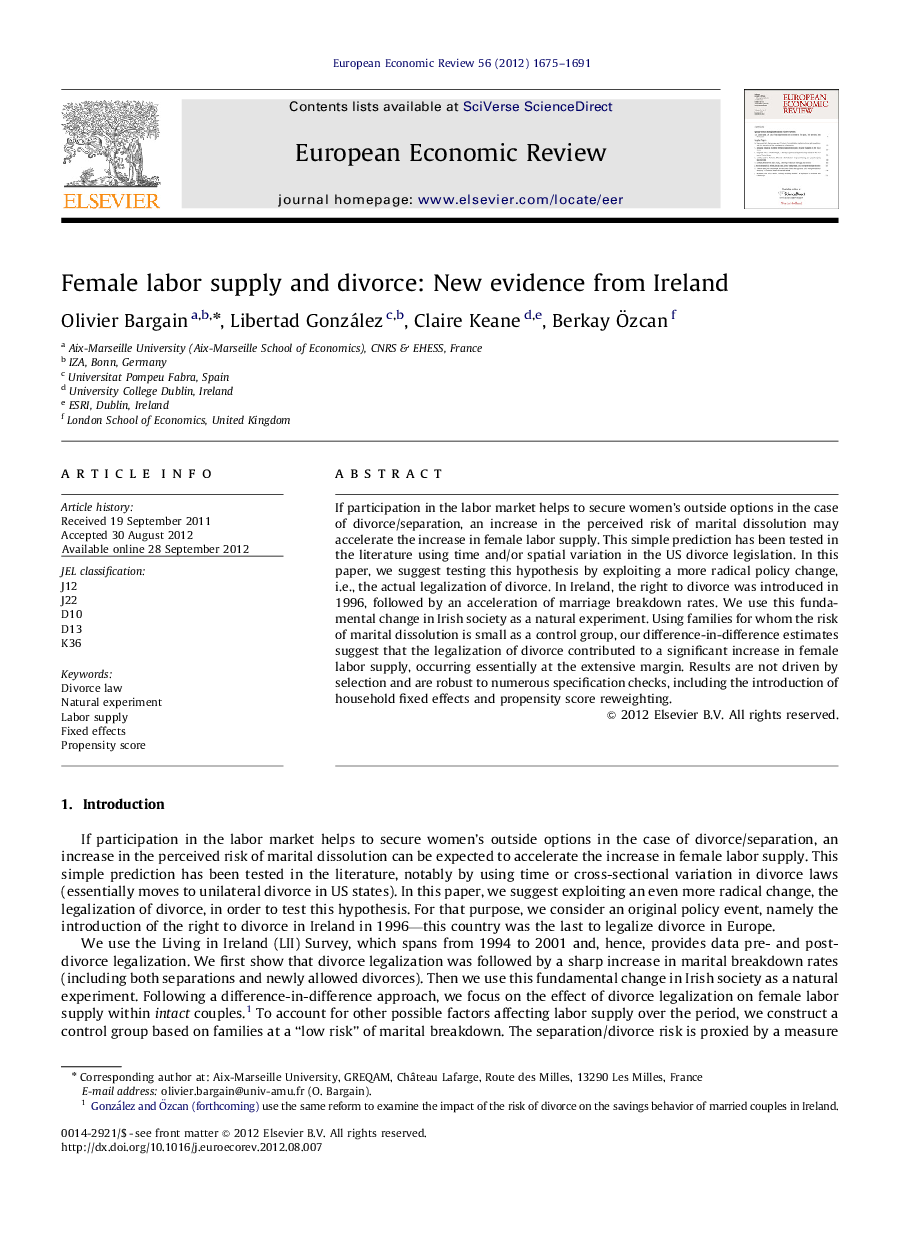| Article ID | Journal | Published Year | Pages | File Type |
|---|---|---|---|---|
| 5066981 | European Economic Review | 2012 | 17 Pages |
If participation in the labor market helps to secure women's outside options in the case of divorce/separation, an increase in the perceived risk of marital dissolution may accelerate the increase in female labor supply. This simple prediction has been tested in the literature using time and/or spatial variation in the US divorce legislation. In this paper, we suggest testing this hypothesis by exploiting a more radical policy change, i.e., the actual legalization of divorce. In Ireland, the right to divorce was introduced in 1996, followed by an acceleration of marriage breakdown rates. We use this fundamental change in Irish society as a natural experiment. Using families for whom the risk of marital dissolution is small as a control group, our difference-in-difference estimates suggest that the legalization of divorce contributed to a significant increase in female labor supply, occurring essentially at the extensive margin. Results are not driven by selection and are robust to numerous specification checks, including the introduction of household fixed effects and propensity score reweighting.
⺠Does a higher risk of divorce lead women to increase their labor supply?. ⺠We test this hypothesis using Irish data. ⺠We exploit the legalization of divorce in 1996 as a natural experiment. ⺠The risk of marital breakdown increased as a result, especially for some groups. ⺠We find that married women in high-risk-of-divorce groups increased participation.
